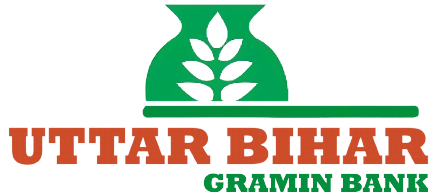Table of Contents
If you’re a small artisan, handloom weaver, fisherman, rickshaw owner, or self-employed micro-entrepreneur, access to quick, affordable credit can be the difference between staying afloat and truly growing. The Uttar Bihar Gramin Bank (UBGB) Swarojgar Credit Card (S.C.C) Scheme is built exactly for that—simple working capital and small asset finance, without the maze of big-ticket loans. Here’s a human-friendly guide to how it works, who it’s for, and smart ways to use it.
What the S.C.C really is (in plain words)
Think of the S.C.C as a compact, multi-use credit line tailored for very small enterprises. It helps you purchase raw materials, pay helpers during busy weeks, fix or replace tools, restock after festivals, or bridge the gap between buying supplies and receiving customer payments. Unlike one-size-fits-all loans, the S.C.C acknowledges that micro businesses earn in small, frequent cycles—and need money to move with those cycles.
Who it’s meant for (Eligibility)
UBGB’s S.C.C focuses on people who create, repair, move, and sell:
- Small artisans and handloom weavers (e.g., weavers, carpenters, potters, metalworkers, dyers)
- Fishermen
- Self-employed service providers (tailors, barbers, cobblers, mobile/TV repairers, food vendors)
- Rickshaw owners and other micro-entrepreneurs
To qualify, you should not be a loan defaulter with any bank or financial institution. KYC is mandatory—carry standard ID/address proof when you apply.
What you can get (Loan limit, types, and validity)
- Loan limit: up to ₹50,000 per borrower
- Types of loan:
- Term Loan: one-time amount for a defined purchase (e.g., a sewing machine, fishing nets, a handcart)
- Revolving/Cash-credit–like fund: draw, repay, and draw again within your sanctioned limit for routine working capital
- Composite (joint) loan: a mix of small asset purchase + working capital, if that fits your plan
- Card validity: 5 years
The credit line stays available during the validity period (subject to bank norms). Individual drawings must be repaid within 12 months, keeping the cycle short and healthy.
Price tag and payback (Interest & repayment)
- Interest rate: 11.50% p.a. (subject to change), applied monthly
- Repayment: within 12 months of each draw (for term/revolving usage as sanctioned)
A quick feel for numbers (illustrative only)
If you borrow ₹50,000 for 12 months at ~11.50% p.a., the EMI works out to roughly ₹4,400–₹4,450 per month. (Your sanction letter will show the exact figure.) Because the S.C.C is designed for micro cash cycles, you can repay early to reduce interest and redraw when the next season/order arrives.
What you can use it for (practical examples)
- Artisans/weavers: yarn, dyes, loom parts, hand tools, finishing materials
- Fishermen: nets, hooks, minor repairs, ice/boxes, fuel for small engines
- Self-employed services: needles/threads, cosmetics, spare parts, cooking gas, packaging
- Rickshaw owners: tyres/tubes, bearings, brake pads, lights, canopy repairs
The idea is simple: borrow for income-generating inputs, not for non-productive spending. That way, every rupee can be traced to an increase in daily/weekly sales.
Insurance that has your back
- Personal Accidental Insurance: available to protect you and your family from shocks
- Crop Insurance: mandatory when the borrower falls under the agricultural category covered by the scheme
Insurance keeps a bad week from becoming a bad year—ask the branch to help you enroll where applicable.
Why S.C.C works for tiny businesses
- Low ticket, high impact: ₹10–50k often solves 80% of micro-enterprise bottlenecks—raw material and small repairs.
- Short cycle discipline: 12-month repayment per draw encourages quick turnover and avoids long, expensive debt.
- Flexibility: With the revolving option, you use only what you need, when you need it, then put it back.
- Track record building: Clean usage and on-time repayments help you qualify for repeat/step-up limits later.
How to apply (step-by-step)
- Map your need: Write down what you’ll buy, expected daily/weekly sales, and how quickly you can repay.
- Visit your UBGB branch: Ask for the Swarojgar Credit Card (S.C.C) application and explain your activity (artisan, service, fishing, rickshaw, etc.).
- Complete KYC: PAN (or Form 60/61), photo ID, address proof, a couple of photographs.
- Share simple proofs (if available): small purchase slips, orders, market stall papers, panchayat/market association note—anything that shows you’re active.
- Choose the right mode: Term Loan (one-time buy) or revolving (frequent buys). If you need both, ask about a composite structure.
- Sanction & card issue: Review your limit, rate, validity, and repayment rules.
- Use wisely & repay early: Track cash in a small diary; even tiny early repayments cut interest and keep your limit free for the next cycle.
Documents checklist (keep it light and neat)
- KYC: PAN/Form 60/61, ID proof, address proof, photos
- Basic activity evidence: buyer slips, workshop photos, stall fee receipts, vendor references (if any)
- Bank details: UBGB account for disbursal and repayments
Your branch may ask for additional, simple proofs based on your trade; keep everything in one folder for speed.
Smart usage tips (so the card makes you money)
- Borrow for stock/tools that turn quickly. A needle set that produces 20 blouses a week is better than a non-essential purchase.
- Match draw to payday. If your buyer pays every Friday, plan small, weekly repayments—interest drops faster than you think.
- Don’t max out day one. Start with the minimum that restarts your cycle; top up only if orders exceed expectations.
- Track every rupee. A pocket diary with date, amount, item, and expected sale price will impress the banker and keep you honest about margins.
- Build a tiny buffer. Even ₹300–₹500 kept aside can save you from a missed installment during a slow week.
FAQs (straight answers)
Is collateral required?
The scheme highlights micro-enterprise access with light documentation. The bank will confirm security norms for your case; at the S.C.C ticket size, processes are designed to stay simple.
Can I take multiple draws?
If sanctioned as a revolving facility, yes—draw, repay, redraw within your limit and validity.
What happens after 5 years?
The card is valid for 5 years. Near expiry, talk to your branch about renewal/continuation based on usage and repayment track.
What if I need more than ₹50,000 later?
Build a good track record. Clean repayments often help with enhanced limits or other MSME products.
Is the 11.50% rate fixed?
Rates are subject to change. Your sanction letter shows the applicable rate and any charges.
Bottom line: UBGB’s Swarojgar Credit Card (S.C.C) Scheme is a small, smart, and flexible credit tool for people who work with their hands and serve their communities every day. With limits up to ₹50,000, 12-month repayment per draw, 5-year validity, and 11.50% indicative pricing, it gives you just enough fuel to keep your enterprise running—and growing—on your own terms. Walk into your nearest UBGB branch with your KYC and a clear plan, and walk out with credit that respects your craft.

Kritti Kumari is a banker and MBA graduate who writes about banking, finance, and customer-friendly services. She simplifies complex financial products into easy guides, helping readers understand Bihar Gramin Bank’s offerings and make smarter money decisions.

